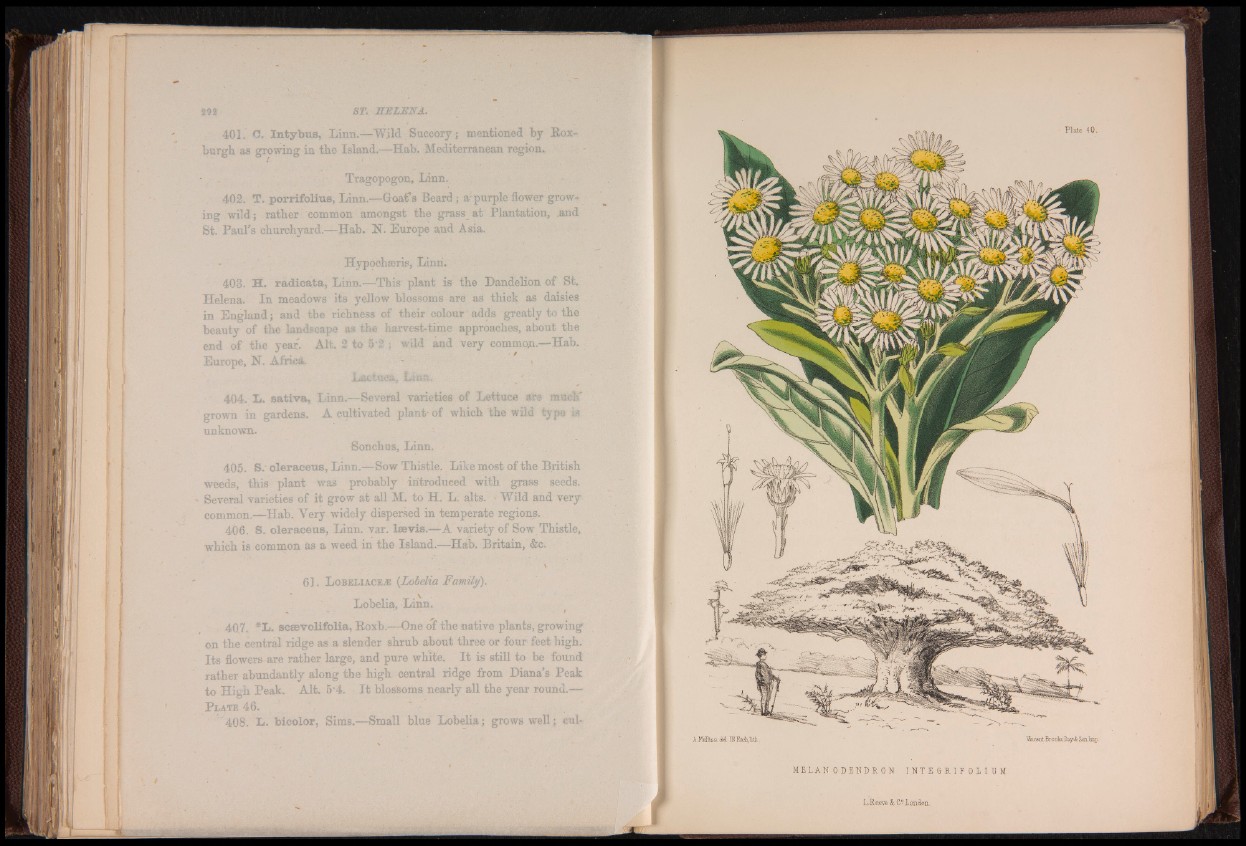
401. C. Intybus, Linn.—Wild Succory; mentioned by Roxburgh
as growing in the Island.—Hab. Mediterranean region.
Tragopogon, Linn.
402. T. porrifolius, Linn.—Goaf’s Beard ; a-purple flower growing
wild; rather common amongst the grass at Plantation, .and
St. Paul’s churchyard.—Hab. N. Europe and Asia.
Hypoehseris, Linn.
408. H. radicata, Linn.—This- plant is the Dandelion of St.
Helena. In meadows its yellow blossoms are as thick as daisies
in England; and the richness of their colour adds greatly to the
beauty of the landscape as the harvest-time approaches, about the
end of the year. Alt. 2 to 5 2 •, wild and very common.—Hab.
Europe, N. Africa. ~ i
404. L. sativa, Linn.—Several varieties of Lettuce are much'
grown in gardens. A cultivated plant- of which the wild t j pe is
unknown.
Sonchus, Linn.
405. S. oleraceus, Linn.—Sow Thistle. Like most of the British
weeds, this plant was probably introduced with grass seeds.
Several varieties of it grow at all M. to H. L. alts. - Wild and very
common.—Hab. Very widely dispersed in temperate regions.
406. S. oleraceus, Linn. var. lee vis.—A variety of Sow Thistle,
which is common as a weed in the Island.—Hab. Britain, &.c.
6 1 . L o b e l ia c e .® {Lobelia Family).
V
Lobelia, Linn.
40,7. *L. scsevolifolia, Boxb.—One of the native plants, growing
on the central ridge as a slender shrub about three or four feet high.
Its flowers are rather large, and pure white. I t is still to be found
rather abundantly along the high central ridge from Diana’s Peak
to High P eak. Alt. 5‘4. I t blosfeoms nearly all the year rounci.—
P l a t e 46.
408. L. bicolor, Sims.—Small blue Lobelia; grows well; cul-
A .MeQlss. d e l. IU .Fitch,Tith. ‘Vmceufc B r o o k sb ayA San.lmp.
MELAN-0 DEAD RON. I.KTE GRIF O i l UM